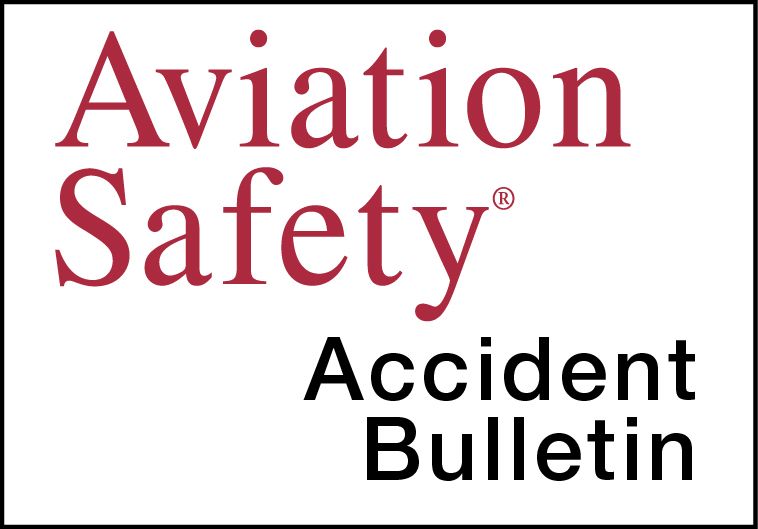AVweb’s General Aviation Accident Bulletin is taken from the pages of our sister publication, Aviation Safety magazine. All the reports listed here are preliminary and include only initial factual findings about crashes. You can learn more about the final probable cause on the NTSB’s website at www.ntsb.gov. Final reports appear about a year after the accident, although some take longer. Find out more about Aviation Safety at www.aviationsafetymagazine.com.
October 5, 2021, Thomson, GA
Dassault Fan Jet Falcon 20
The airplane was destroyed at 0544 Eastern time when it collided with terrain short of the landing runway. The captain and first officer were fatally injured. Night visual conditions prevailed for the FAR Part 135 on-demand cargo flight.
At about 0537, after an uneventful flight from Texas, ATC cleared the flight for the ILS Runway 10 approach. According to surveillance video, the airport and runway lights were activated at about 0539. At about 0542, the accident airplane’s landing lights came into view and were visible for about two minutes. The video showed the airplane approaching Runway 10 in a relatively constant descent and heading. About 25 seconds before the airplane’s landing lights disappeared, a momentary right turn, followed by a left turn and increased descent rate, was observed. The landing lights disappeared at about 0544. The final ADS-B data point showed the airplane at 800 feet msl and 1.36 nm from the runway threshold. The airplane came to rest about 0.70 nm from the runway threshold. There was no post-crash fire.
Examination revealed the horizontal stabilizer and its jack screw were within a normal envelope. The flap selector was in the fullflaps (40-degree) position and the landing gear handle was selected down. Both engines exhibited impact damage; foreign object debris with the appearance of wood chips and green vegetation were observed inside them.
October 8, 2021, Atlanta, GA
Cessna P210N Pressurized Centurion
At about 1311 Eastern time, the airplane was destroyed during an attempted takeoff. The pilot and the three passengers were fatally injured. Visual conditions prevailed.
Surveillance video revealed the airplane lifted off about 1000 feet down Runway 21 in a nose-high attitude, rolled left to an inverted attitude and impacted nose-first beside the runway. The cabin and instrument panel were consumed by a post-impact fire. The inboard trim-tab actuator rod correlated to five degrees tab down with the outboard actuator rod exhibiting a five-degree tab up position. The airplane had been converted to a Rolls-Royce turboshaft engine in July 2021.
October 8, 2021, Los Banos, Calif.
Beech B36TC Turbocharged Bonanza
The airplane was substantially damaged in an off-airport landing following engine failure at about 1900 Pacific time. The solo pilot was not injured. Visual conditions prevailed.
While cruising at about 10,000 feet MSL, the engine lost oil pressure and its manifold pressure dropped. The pilot immediately diverted to a nearby airport. In the descent, the engine momentarily produced partial power, but then serious vibrations were experienced and the engine subsequently lost all power. During this time, the cockpit filled with smoke and fire, and sparks were observed emanating from the engine cowling. Unable to reach the divert airport’s runway, the pilot conducted a forced landing on a road. During the landing roll, the airplane struck an object, resulting in substantial damage to its wings.
October 10, 2021, Greenville, S.C.
Flight Design CTLS LSA
At about 1210 Eastern time, the airplane was substantially damaged when its pilot deployed the airframe parachute following engine failure. The solo pilot received minor injuries. Visual conditions prevailed.
According to the pilot, the accident flight was the first after an annual inspection. About 18 miles south of his destination, engine oil pressure dropped to zero. The pilot turned toward a nearby airport and declared an emergency. The engine continued to run for a few minutes before it seized. Unable to reach the divert airport, the pilot turned toward an open clearing before deploying the airplane’s ballistic parachute at about 500 feet AGL. The airplane came to rest in pine trees about 50 feet high. Examination revealed two engine oil hoses were disconnected.
This article originally appeared in the January 2022 issue of Aviation Safety magazine.
For more great content like this, subscribe to Aviation Safety!



































